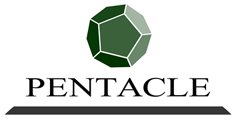This article was written by Prof Eddie Obeng for Training Journal, and posted on his personal blog.
In a recent article in Training Journal, Peter Honey argued articulately that classroom learning should not be written off yet and still has a lot to contribute. His focus was on the softer side of classroom learning arguing that they are ‘ring-fenced spaces with learning the explicit purpose’ and that ‘It is far easier for classrooms to be learning-friendly than everyday workplaces’. He points out that ‘They allow people to meet together to share experiences and indulge in reciprocal learning. They are cheerful, off-the-record places with relaxed laughter.’
In spite of this, e-learning continues its steady growth – estimated to reach a value of £45 billion by 2014 with growth rates of around 30% in Eastern Countries. In this rising tide the focus of e-learning continues to be cost and convenience rather than quality, although recent trends towards using interactive (serious) games and ice breakers,1 the continued effort to merge classroom and online sessions mean that increasingly studies of the quality of the learning suggest less and less of a gap.2 In particular, corporate e-learning continues to grow in an economy where the business cases can be made for change.
The pace of global change continues to increase at the same time as there is an increased need to deliver results and new outcomes even faster. New Processes put in place quickly become obsolete and must rely on the inventiveness and goodwill, cemented by relationships between colleagues, to provide the glue and sticking plaster which ensures continued delivery of the organisation’s goals and products. Customer demands for service and quality continue to rise not as fast as the average player in the market but at the speed of the fastest. Through collaboration, merger or acquisition, even small scale enterprises and local government institutions are drawn into having to think and work at a global scale, crossing cultures, and time-zones.
The use of the classroom described by Peter Honey above would be an ideal way of forging the new cross cultural relationships. The use of traditional e-learning as a way to re-equip and re-skill at the speed required. But both have within them constraints which prevent them providing the solution to the demands of the 21st century. The figure below highlights the challenge:
E-learning ends up relegated to the bottom half of the set of cubes whilst the classroom is stuck in the front half. Even newer e-learning approaches remain stuck in broadcast mode and because at the end of the webinar there is ‘nothing to see’ the lack of persistence keeps them as events rather than as captures of knowledge for life long application.
In the corporate environment there is an increasing demand that the learning is not only learned but put into practice. This simple need means that three new areas will begin to quickly rise to absorb the old worlds of e-learning and classroom learning.
The first is the use of Augmented Learning. My favourite example of this concept is the way in which certain Duracell batteries can tell you whether they still hold a charge or not. Augmented learning is a way in which to attach answers to the questions which arise from real life objects. An accountant looking at a balance sheet should instantly have access to the set of questions he should ask and calculations to carry out. In fact the accountant need not learn anything at all! In areas where conventions are strong, and the process is repetitive this type of learning will steadily come to dominate. It is easily updatable for all users at the same time and does not require re-training or a human change management process.
The second area is Mobile Learning. My favourite example of this is happened a few months ago when after I had completed a IRL conference presentation I was surrounded by people waiting to ask questions and noticed that one person was ‘Googling’ me on his phone and reading the background article while queueing up. Mobile learning will enable the learning to cross the boundary from the classroom/webinar into the workplace.
The third is Enterprise Led Learning. My favorite example is the use of 3D internet (fully-functional, immersive environments). For example, on QUBE, the ‘classroom’ (where avatars interact, work in syndicates, brainstorm with post-its, specialists give short talks, etc.) is just across the virtual hall from the Team/ Project room where the global execution team, from several countries, keep their PowerPoints, Excel spreadsheets and plans and all meet for an hour twice a week (although the individuals come and go frequently since such environments offer ‘persistence’- everything stays where you left it.). The classroom agenda is set by the needs of the Enterprise but there is no functional distinction between learning and application. In addition the demand to develop people across the globe is met without disruption. The learning and the activity all share the same purpose of delivering the goals. This type of learning best solves the challenges at the top/executive levels of the organisation, in the innovative and creative centres and the areas of complex change and project execution. What is common to these three environments are that the people face challenges of high uncertainty and ambiguity, full of unknown-unknowns.
So strangely although the tide of e-learning is still in full flood, by acknowledging the softer, relational and emotional advantages of classrooms to cross cultural boundaries and build relationships three new solutions emerge. One which removes the need for learning, another which provides it when & where you need it, and a third which merges learning and working seamlessly using learning simply as another resource in the delivery of challenging enterprise goals.


.svg/2000px-My_Wife_and_My_Mother-In-Law_(Hill).svg.png)





No comments:
Post a Comment